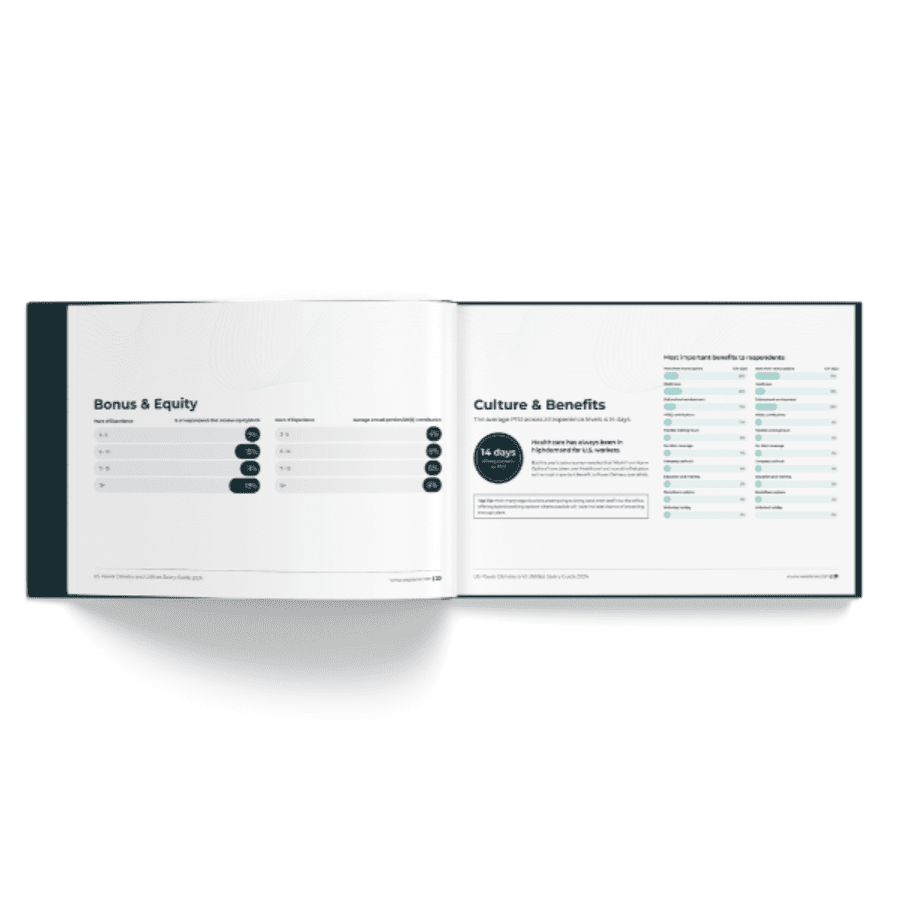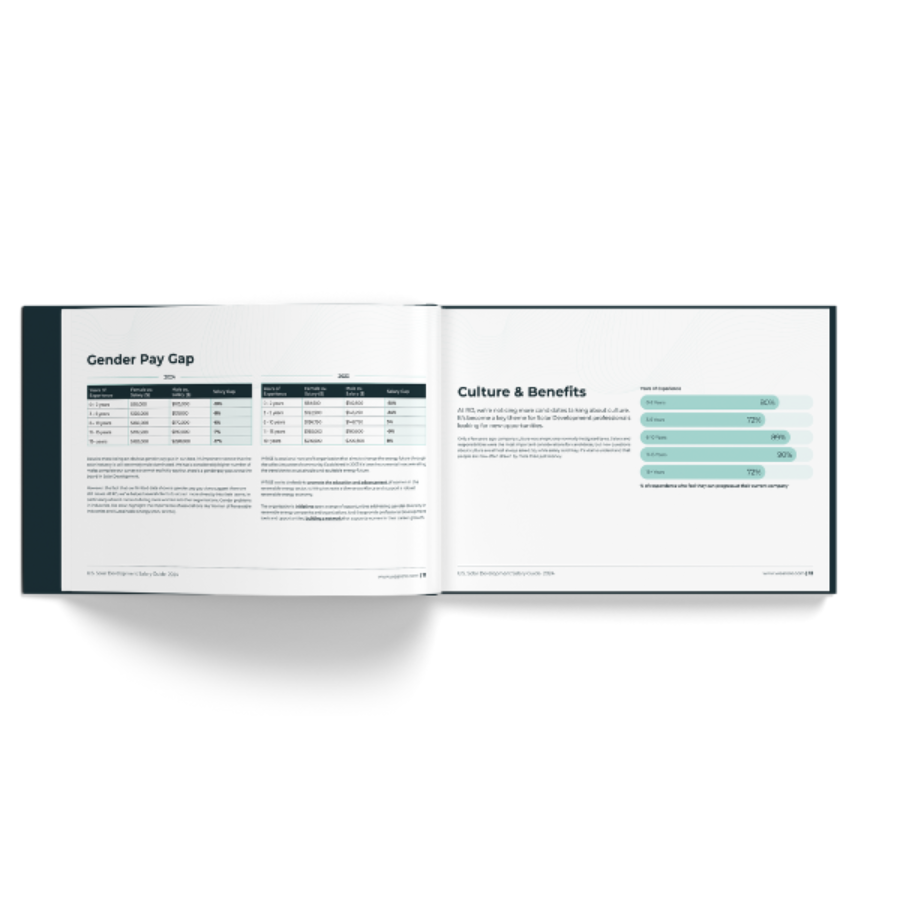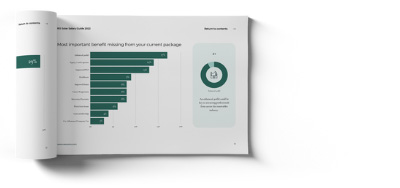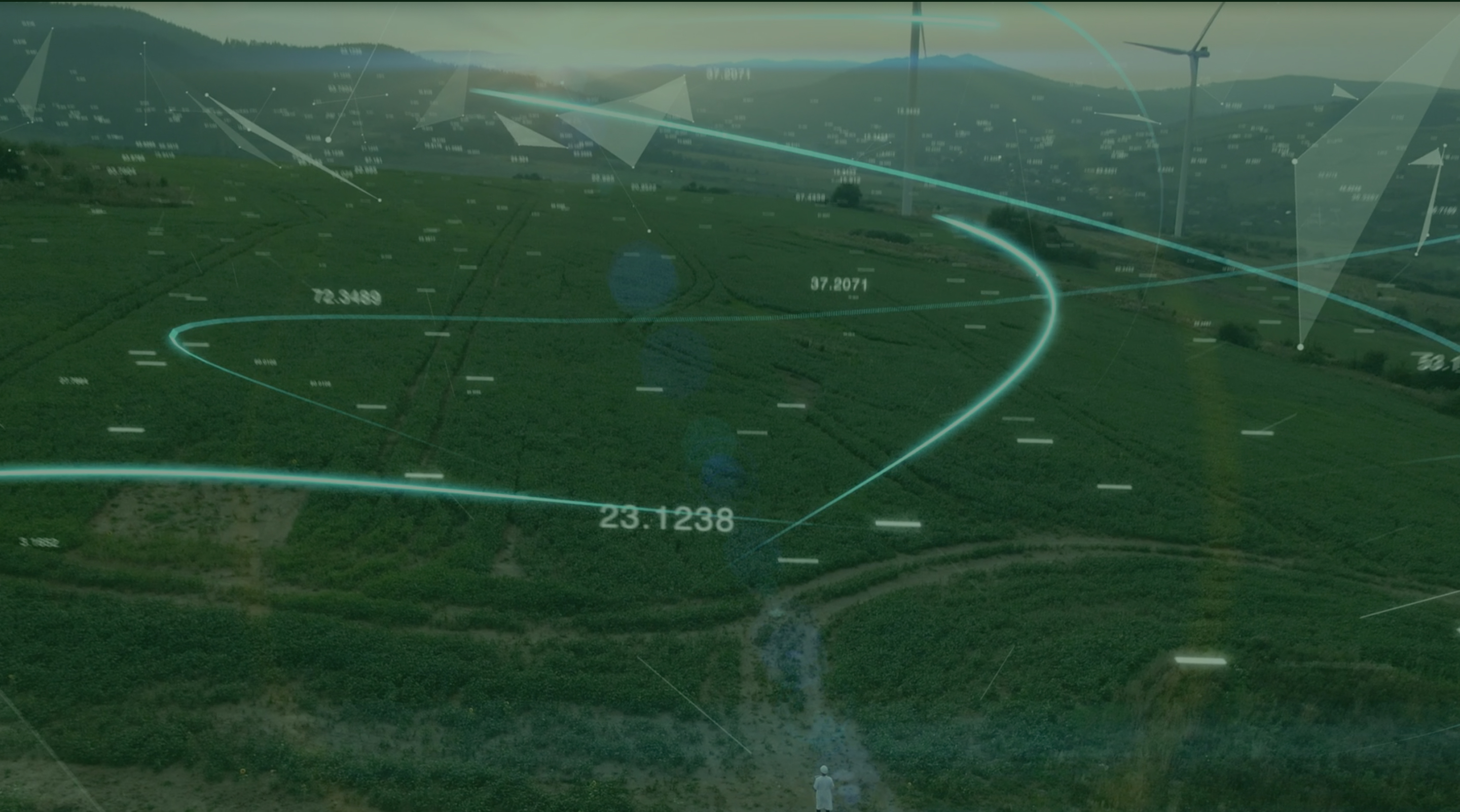Benchmark Your Compensation
RO are proud to bring the latest compensation data, industry trends, and hiring insights to the Solar Development market through our annual report.

What's Inside?
Compensation Data provided by over 500 professionals working in the US Solar Development market, analysed against market specialism, market focus, and year's of experience.
Bonus spotlight: Discover when bonuses are paid out, payout requirements, average bonuses by year's experience and sign on bonuses.
Career Progression and Learning and Development insights.
Benefits data, including 401(k), equity, PTO, health insurance and maternity/paternity leave.
Working environment analysis comparing working from home, hybrid or fully in office.
Solar Development in 2024
As the industry grows, so does the demand for specialized roles and professionals with the skills to fill them. Our data was gathered from a comprehensive survey of more than 500 solar development professionals and combined with RO’s in-house data and expertise, ensuring an accurate and wide range of information.
But it’s not all about compensation. While still important, salary is no longer the most important factor in job satisfaction. Employees are increasingly looking at the bigger picture and we shine a light on the perks that today’s Solar Development specialists are looking for.
In a progressive market like Solar Development, where industry dynamics are constantly evolving, this kind of information isn’t just useful – it’s essential! These trends will help you not just survive but thrive in this exciting and ever-evolving industry.

Our Research
Research Methodology
The purpose of this methodology is to provide a clear understanding of the approach utilized in conducting a survey aimed at Solar Development professionals. This survey aimed to gather insights into various aspects of the Development industry, including compensation data (base and total package), working environments, trends, challenges, and best practices.
Survey Design:
Objective: The primary objective of the survey was to understand the perspectives and experiences of Solar Development professionals as well as gather data that could provide industry wide benchmarks.
Questionnaire Development: A comprehensive questionnaire was designed to cover key areas such as compensation, industry trends for 2024, important benefits, learning and development programs, and challenges faced by Solar Development professionals.
Pilot Testing: Prior to the official launch, the questionnaire underwent pilot testing to ensure clarity, relevance, and effectiveness in eliciting the desired information.
Question Types: The questionnaire included a mix of multiple-choice questions, Likert scale items, and open-ended questions to capture a broad spectrum of responses.
Sampling Method:
Target Population: The target population comprised professionals actively involved in Solar Development across the renewables sector in the US.
Sampling Technique: A combination of convenience sampling and purposive sampling techniques was employed to reach out to a diverse pool of professionals.
Sample Size: The survey aimed to collect responses from over 500 Solar Development professionals to ensure adequate representation and statistical reliability.
Data Collection:
Online Survey Platform: The survey was administered using a reputable online survey platform, ensuring ease of access and data security.
Distribution Channels: The survey link was distributed via professional networks, industry forums, and targeted email invitations to reach the intended audience.
Data Collection Period: The survey was conducted over 1 month in January and February 2024 to allow sufficient time for respondents to participate and provide thoughtful responses.
Data Analysis:
Quantitative Analysis: Responses to multiple-choice and Likert scale questions were subjected to quantitative analysis using statistical tools to identify trends, patterns, and correlations.
Qualitative Analysis: Open-ended responses were analyzed thematically to extract insights, opinions, and anecdotes shared by respondents.
Ethical Considerations:
Informed Consent: Participants were provided with clear information about the purpose of the survey and their voluntary participation. Consent was obtained before proceeding with the survey.
Anonymity and Confidentiality: Respondents were assured of the confidentiality of their responses, and measures were implemented to anonymize data to protect the privacy of participants.
Limitations:
While efforts were made to ensure the representativeness of the sample, the findings may be subject to biases inherent in survey research, such as self-selection bias.
The generalizability of findings may be limited to the population of Executive Search professionals who participated in the survey.
Conclusion:
The methodology employed in this survey aimed to uphold standards of rigor and validity in data collection and analysis, thereby providing meaningful insights into the perspectives and practices of Executive Search professionals.
This methodology outlines the systematic approach adopted in conducting the survey, ensuring reliability and credibility in the generation of findings and conclusions.Click to Edit
How does your salary compare?
Discover what your peers are earning and the benefits they are receiving from across the Power Delivery Market in the 2024 US Power Delivery Salary Guide.


